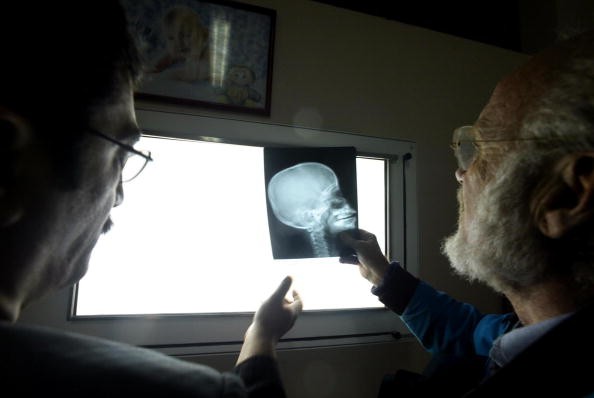New material regrows bone


Current treatments to repair injuries or defects to bone often involve surgery to graft bone from other parts of a patient’s body. This procedure is often painful and can be especially difficult when treating injuries and damage to the skull or facial bones.
A research team from Northwestern University and the University of Chicago were able to regenerate the skull bone in a mouse with supporting blood vessels in the discrete area needed without developing scar tissue and faster than current methods. This breakthrough drastically improve the outcomes of people with severe skull or facial bone trauma.
“The results are very exciting,” said Guillermo Ameer, professor of biomedical engineering at Northwestern’s McCormick School of Engineering, and professor of surgery at Feinberg School of Medicine. “This project was a true collaborative team effort in which our Regenerative Engineering Laboratory provided the biomaterials expertise” He continued.
In the experiment, the researchers harvested skull cells from the mouse and engineered them to produce a potent protein to promote bone growth. They then used Ameer’s hydrogel, which acted like a temporary scaffolding, to deliver and contain these cells to the affected area. It was the combination of all three technologies that proved so successful, Ameer said.
Using calvaria or skull cells from the subject meant the body didn’t reject those cells. Also, BMP9 was the chosen protein because it not only promotes the rapid growth of bone cells, but also improves the creation of blood vessels in the surrounding area, which is essential to support healthy bone tissue.
“When applied, the liquid, which contains cells capable of producing bone, will conform to the shape of the bone defect to make a perfect fit,” Ameer said. “It then stays in place as a gel, localizing the cells to the site for the duration of the repair. What we found is that these cells make natural-looking bone in the presence of the PPCN-g. The new bone is very similar to normal bone in that location.”
The three-part method was successful on a number of fronts: The regenerated bone was better quality, the bone growth was contained to the area defined by the scaffolding, the area healed much more quickly, and the new and old bone were continuous with no scar tissue.
The potential, if the procedure can be adapted to treat people that suffered trauma from car accidents or aggressive cancers that have affected the skull or face, would be huge, and give surgeons a much-sought-after option.
While Ameer did caution that the technology remains years away from potential application in humans, he also noted that the team is optimistic: “We did show proof of concept that we can heal large defects in the skull that would normally not heal on their own using a protein, cells, and a new material that come together in a completely new way. Our team is very excited about these findings and the future of reconstructive surgery.”
Prepared by





